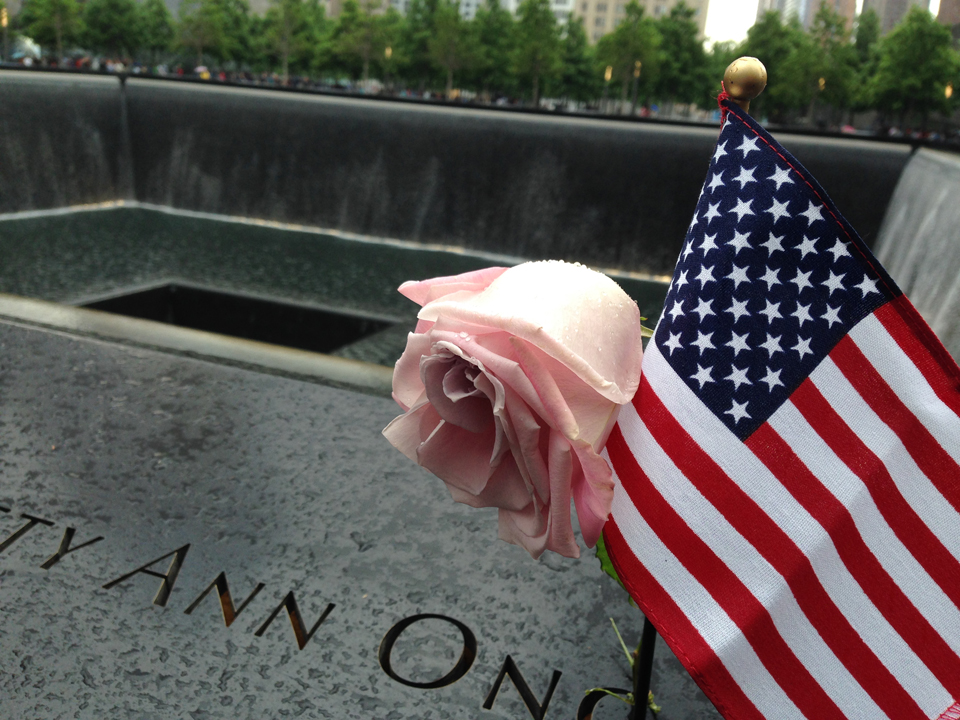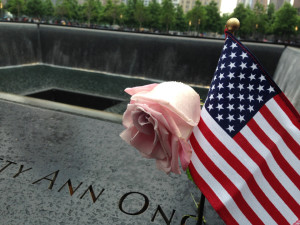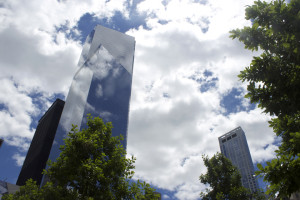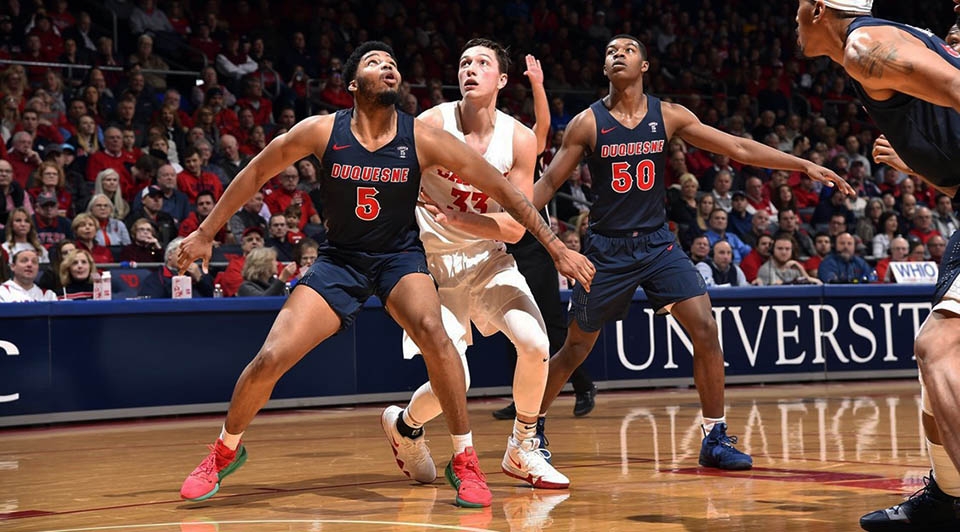

By Julian Routh | News Editor
In the late afternoon on Sept. 11, 2001, the Bluff looked more like a ghost town than a college campus.
The parking garages were empty, Academic Walk was silent and the only sign of life was in the Student Union ballroom, where the Duquesne community gathered for a spontaneous vigil.
“I remember hugging people on campus I didn’t even know,” former student Cheryl (Soltis) Martel said. “Nobody was shaking hands during the sign of peace. They were embracing.”
Just hours earlier, at 9:03 a.m., some students and faculty were glued to their televisions, watching as the second of two planes struck the Twin Towers in New York City. What proceeded was even more terrifying; the towers collapsed, a third plane hit the Pentagon in Washington, D.C. and a fourth crashed in a field in Shanksville, Pennsylvania.
Nearly 3,000 people died that day in what former President George W. Bush called “evil, despicable acts of terror” by Islamist terrorist group al-Qaida.
But what ended up being one of the most horrifying days in U.S. history was first a clear, sunny September day.
At Duquesne, it was a normal Tuesday. Law school Dean Ken Gormley, then a professor, was in his office preparing to teach a class. University President Charles Dougherty was doing paperwork at his desk in Old Main.
Former student Katie (Fortier) Helfrich was still sleeping in her room in Towers, when a message from her roommate’s mother on the answering machine woke her up.

“I remember her saying, ‘You girls might want to get up and turn the TV on,’” Helfrich recalled.
What Helfrich saw was smoke and flames coming out of the North Tower of the World Trade Center. It was the same image that the Rev. Sean Hogan was watching on a television in the Administration Building.
“I’ll never forget what happened next,” Hogan said. “To see the second plane actually hit the Towers – the tremendous dust that came out and all the running – it’s something you’ll never forget.”
At this point, it was clear to Hogan that this was no accident. Gormley remembers thinking the same thing as he watched on television the towers burning and people running.
Gormley called his wife to make sure his children, who were at school in Swissvale, Pennsylvania, were safe. Due to teach a class in just minutes, Gormley had to decide whether he would hold the class as scheduled or cancel it.
“I decided to go to class and start with a moment of silence and prayer,” Gormley said. “No one knew exactly how to handle this. A number of students were really upset and wanted to leave, so I let them. It was better to teach some of the class to calm people down.”
As the clock neared 10:30 a.m., Duquesne officials were alerted of a third plane that might be headed for the U.S. Steel Tower in Downtown Pittsburgh. Dougherty and his staff initiated an immediate evacuation of all campus academic buildings and residence halls.
Helfrich, in Towers dorm, recalls chaos on her wing.
“People were coming out of their rooms, asking questions,” Helfrich said. “Not long after that, the resident assistants started coming around and telling everyone we needed to get out of Towers.”
The third plane, United Airlines Flight 93, was heading toward the U.S. Capitol Building. However, passengers fought back against hijackers, forcing them to crash the plane into a field in Shanksville.
Duquesne cancelled classes soon after the evacuation. Most of the students who lived off campus wanted to go home, which caused traffic to build up. Traffic was already backing up Downtown. It took Helfrich more than two hours to get to her parents’ home, which was only a half hour away.
Dougherty, who had been University president for less than a month, called for a number of televisions to be set up on Academic Walk so resident students could “stay on top of the news.”
“I also asked our food service to begin moving the service for lunch outdoors to make sure that people had no reason to go into a dining room,” Dougherty said.
When Hogan joined the students and faculty gathered on A-Walk, he noticed that something in particular was creating tension. For the first time in U.S. history, the Federal Aviation Administration ordered the grounding of all flights over the United States. Pittsburgh International Airport was a designated landing zone for planes in the area, so many passed through the Pittsburgh skies.
“Plane after plane after plane was coming. There had to have been 20 to 30 planes,” Hogan said. “We didn’t know what was going to happen.”
After lunch, the Spiritan ministry asked students to come to the Union Ballroom for a prayer service. More than 1,500 people attended the vigil, Hogan said. Gormley said the vigil was “wonderfully done,” and that it gave people a sense of reassurance that everything was going to be okay.
With images of the morning’s events etched into their minds, students and faculty got a chance to meditate and pray for the people who had been killed, which Hogan said was very important.
“It was a moment when we could get together and pray for peace and pray for some kind of understanding of what this was all about,” Hogan said.
It didn’t take long for things to return to normal at Duquesne. Classes resumed the following day, but the memories were still very real, and continue to be 13 years later.
“Having a community is an important way to get through these things,” Gormley said. “The Duquesne community was a wonderful example of that. Everyone rallied together from the President on down, and that gave a true sense of security.”



